Painting of an Abstract Person Famous Abstract Art People
The appearance of the 20th century saw a revolution in the fine art world in which artists moved away from representational art, which aimed to stand for a delineation of a visual reality; and towards brainchild, which gave them independence from the visual world. In the strict sense, abstruse art bears no trace of anything recognizable in the natural world just the genre is not express to these works as it saw numerous artists who practiced varying degree of brainchild. Fauvism of Henri Matisse, and Cubism of Georges Braque and Pablo Picasso, used partial abstraction. These movements were an important precursor to the abstruse movements which ultimately dominated the art world in the 20th century. These included Orphism, Suprematism, Neoplasticism, Optical fine art and near prominently Abstract Expressionism. Know more nigh the evolution of abstract art by studying the ten nigh famous abstruse artists, the movements they were related to, their contribution and their greatest works.
#10 Robert Delaunay
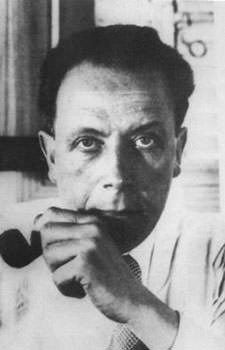
Nationality: French
Lifespan: 12 Apr 1885 – 25 October 1941
The initially works of Robert Delaunay were Neo-Impressionist merely with time he moved towards abstraction. His 1912 work Simultaneous Windows was his concluding semi figurative work before he began experimenting with complete non-objectivity. His almost of import contribution to abstract art was co-founding the Orphism fine art movement, an adjunct of Cubism which focused on pure brainchild and brilliant colors. The movement aimed to dispense recognizable discipline matter and thus played a key role in the development of abstract art. Delaunay'south abstruse paintings were based on the optical characteristics of brilliant colors that were so dynamic they would function every bit the form. By being the leader and most famous figure of Orphism, Delaunay is ranked among the most influential abstruse artists.
Abstract Masterpiece: Rhythm, Joy of Life (1930)
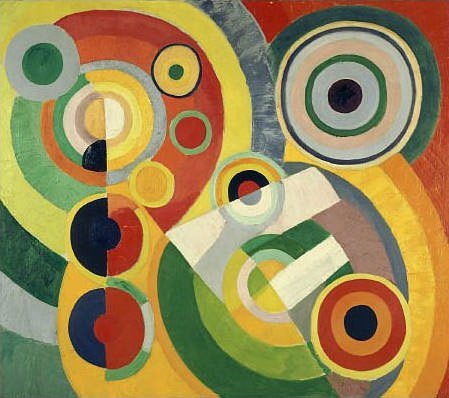
Other Famous Abstruse Works:-
Hommage to Blériot (1914)
Simultaneous Contrasts: Sun and Moon (1913)
#9 Kazimir Malevich
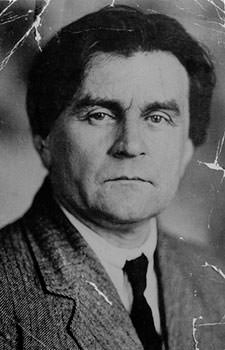
Nationality: Russian
Lifespan: February 23, 1878 – May 15, 1935
Geometric brainchild is a form of abstract fine art based on the use of geometric forms. Kazimir Malevich was the founder of the art movement known as Suprematism, which focused on basic geometric forms, such as circles, squares, lines, and rectangles, and the employ of express range of colors. He is thus a pioneer of geometric abstract ar t. His 1915 Suprematist painting Black Foursquare is i of the nearly famous and influential works in the history of abstract art. Malevich was as well an art theoretician and wrote the book The World as Non-Objectivity, which outlined his suprematist theories. He was a cardinal figure in the evolution of total abstraction and reducing a painting to its geometric essence.
Abstract Masterpiece: Blackness Square (1915)

Other Famous Abstract Works:-
White on White (1918)
Suprematist Composition (1916)
#8 Willem de Kooning

Nationality: Dutch-American
Lifespan: Apr 24, 1904 – March nineteen, 1997
Abstract E xpressionism was a post Globe State of war Ii art movement which was the kickoff specifically American movement to gain international prominence and one of the most influential movements in abstract art. Information technology incorporated a variety of styles and emphasized on conveying potent emotional or expressive content through abstraction. Willem de Kooning was one of the most prominent Abstract Expressionists who specialized in distorting figure painting to the level of brainchild and blending various styles to create impressive canvases. He as well created sculptures in his late career. De Kooning's paintings accept regularly sold for tape prices. His Woman Three was sold for $137.5 million in 2006, the second highest price at the time, and in 2015, his Interchange was sold for $300 one thousand thousand, which remains the highest cost paid for a painting as of July 2017.
Abstract Masterpiece: Woman I (1952)
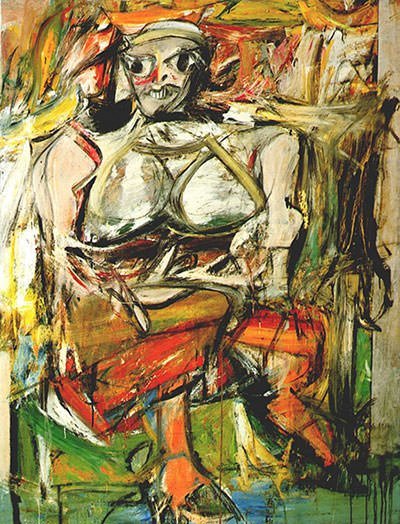
Other Famous Abstract Works:-
Interchange (1955)
Woman III (1953)
#7 Victor Vasarely

Nationality: Hungarian–French
Lifespan: Apr 9, 1906 – March 15, 1997
Op art, a short course for optical fine art, in a genre in abstract fine art in which the creative person creates an optical illusion through precise manipulation of patterns, shapes and colors. It usually consists of non-representational geometric shapes, about oft creating an illusion of motion. Afterward initially working as a graphic designer and a poster artist, Victor Vasarely somewhen became one of the founders and the nearly famous figure of the Op art movement, amongst the most influential movements in abstract art. Op fine art not only influenced the art globe but as well spread to other areas including architecture, computer aided design, animation and mode. Vasarely's painting Zebra (1937) is considered one of the earliest examples of OP fine art. He went on to create some of the movement's most renowned works in both painting and sculpture. Victor Vasarely is known equally the "Father of Op Art".
Abstract Masterpiece: Zebra (1937)
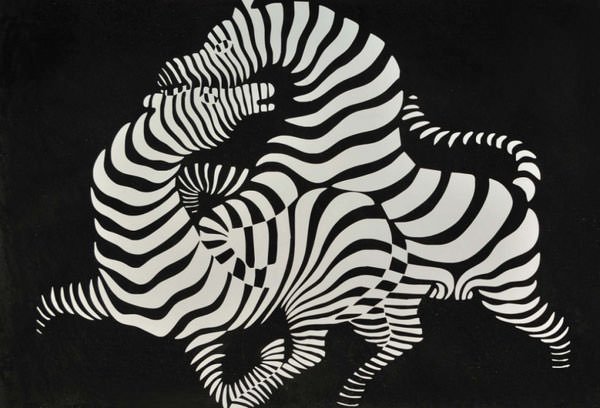
Other Famous Abstract Works:-
Vega-Nor
Vonal Stri
#6 Alexander Calder

Nationality: American
Lifespan: July 22, 1898 – November eleven, 1976
One of the most influential sculptors of the twentieth century and maybe the most acclaimed abstract sculptor, Alexander Calder is famous for his invention of the mobile, an abstract sculpture that moves in response to impact or air currents past taking advantage of the principle of equilibrium. In improver to mobiles, Calder made static sculpture called stabiles, wire sculptures, toys, theatrical sets, paintings in oil and gouache, and even jewelry and numerous household objects. Calder also created monumental sculptures including .125 for JFK Airport in New York City in 1957, Spirale for UNESCO in Paris the following year and his largest sculpture El Sol Rojo in 1968 exterior the Aztec Stadium for the New Mexico Summer Olympic Games. Ii months afterwards his decease in Nov 1976, Alexander Calder was awarded the Presidential Medal of Liberty, the highest civilian honor in the United States.
Abstruse Masterpiece: Flamingo (1974)
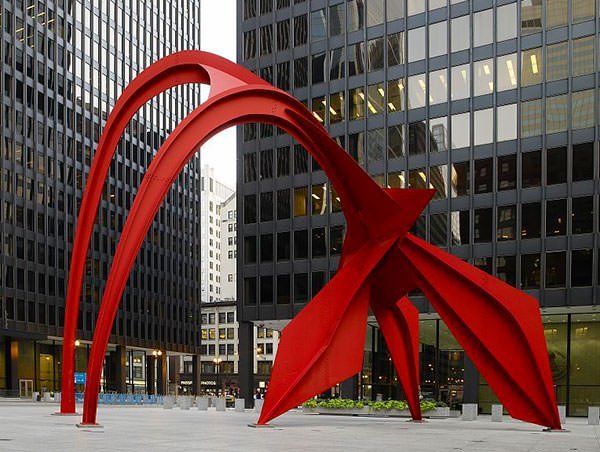
Other Famous Abstract Works:-
Lobster Trap and Fish Tail (1939)
Arc of Petals (1941)
#5 Marker Rothko
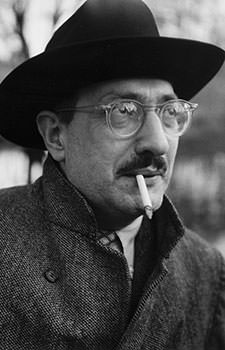
Nationality: Russian-American
Lifespan: September 25, 1903 – February 25, 1970
Marker Rothko, or Markus Yakovlevich Rothkowitz, belonged to a Russian Jewish family which immigrated to the United States when he was a child. He moved through a number of styles in his artistic career including S urrealism before he developed his own signature style. Rothko is considered a pioneer of Color Field painting, a style within Abstract Expressionism in which color is the principal bailiwick itself. Though Rothko is regarded as one of the leading abstract artists, he insisted that he was not an abstractionist equally his master focus was discovering mysticism and esoteric aspects of colors and its combinations. Painting was a method of spiritual expression for Rothko and many viewers take broken down in tears in front of his works. Despite his statement, the contribution of Rothko to Abstract Expressionism is monumental.
Abstract Masterpiece: Orangish, Red, Yellow (nineteen 61 )

Other Famous Abstruse Works:-
Untitled (Black on Grey) (1970)
No. 10 (1950)
#4 Georgia O'Keeffe
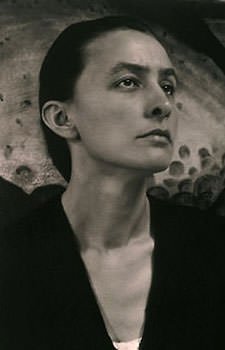
Nationality: American
Lifespan: November xv, 1887 – March half-dozen, 1986
American Modernism was an artistic and cultural movement which peaked between the two World Wars. It was marked by a deliberate departure from tradition and apply of innovative forms of expression. Georgia O'Keeffe became the leading figure in American Modernism by challenging the boundaries of creative style with her paintings, which combined abstraction and representation. She is almost famous for her dramatically big, sensual close-upwards of flowers which essentially fabricated them into abstruse works. Georgia O'Keeffe is not just the near famous female abstract artist just as well one of the most influential figures of 20th century art. She was awarded the Presidential Medal of Freedom in 1977.
Abstruse Masterpiece: Black Iris Iii (xix 26 )

Other Famous Abstruse Works:-
Red Canna (1924)
Blue and Dark-green Music (1921)
#three Piet Mondrian
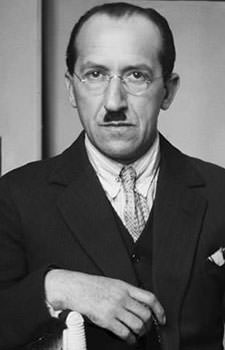
Nationality: Dutch
Lifespan: March 7, 1872 – February 1, 1944
Piet Mondrian began equally a conventional artist, and experimented with Luminism and Cubism, before becoming the most influential contributor to the De Stijl art movement which advocated pure abstraction by a reduction to the essentials of form and color. He coined the term neoplasticism for his abstract art in which he only used the straight line, the three primary colors, and the neutrals of blackness, white and gray. Mondrian is considered an important leader in the development of abstract art. His work inspired two influential movements, the German language Bauhaus motion which focused on simplified lines and color theory; and New York's Minimalism which was based on geometric forms and a narrow color palette.
Abstract Masterpiece: Broadway Boogie Woogie (19 42–43 )
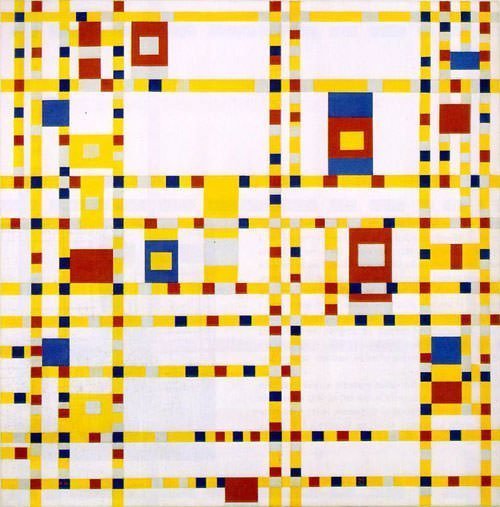
Other Famous Abstract Works:-
Limerick with Red, Yellow, and Blue (1937–42)
Composition 2 in Red, Bluish, and Xanthous (1930)
#2 Jackson Pollock

Nationality: American
Lifespan: January 28, 1912 – August 11, 1956
Drip painting is a form of abstruse fine art in which paint is dripped or poured onto the sail, rather than being carefully applied. Jackson Pollock is the most famous practitioner of drip painting to the extent that he was dubbed "Jack the Dripper" past TIME magazine. Pollock'southward technique of pouring and dripping pigment popularized the term action painting, a method in which the physical act of painting itself is an essential aspect of the finished work. His about famous works include Blue Poles, which was purchased by the National Gallery of Commonwealth of australia in 1973 for A$one.3 million, a then world record for a contemporary American painting; and No. five, 1948, which created the world record for the highest price paid for a painting when it was sold for a price of $140 million. Jackson Pollock is not only the most famous Abstract Expressionist artist only also one of the leading figures of 20th century art.
Abstract Masterpiece: Number v, 1948
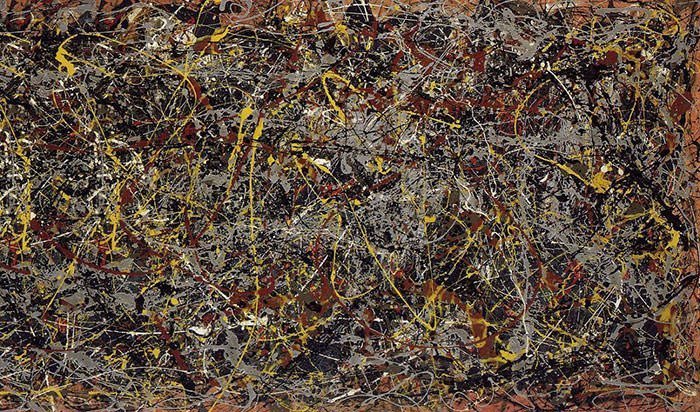
Other Famous Abstract Works:-
Number 11, 1952 (Blue Poles)
1: Number 31, 1950
#1 Wassily Kandinsky
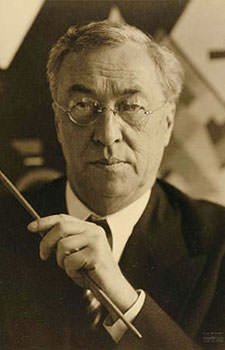
Nationality: Russian
Lifespan: December xvi,1866 – December xiii, 1944
Initially a teacher of law and economics, Wassily Kandinsky gave up his promising career to pursue his interests in art. He rose to prominence in the 1910s to get one of the leading figures in modernistic fine art. Kandinsky is a pioneer of abstract art and he painted some of the earliest works in the genre including what is known as the First Abstract Watercolour. Music, being abstract in nature, was an inherent part of his art and he named some of his spontaneous works as "improvisations" and elaborate ones as "compositions". Apart from being a painter, Kandinsky was likewise a prominent art theorist whose books had an enormous and profound influence on future artists. For his tremendous contribution in moving the art world away from representational traditions and towards abstraction, Wassily Kandinsky is considered by many equally the "Male parent of Abstract Art".
Abstract Masterpiece: Composition Vii (1913)
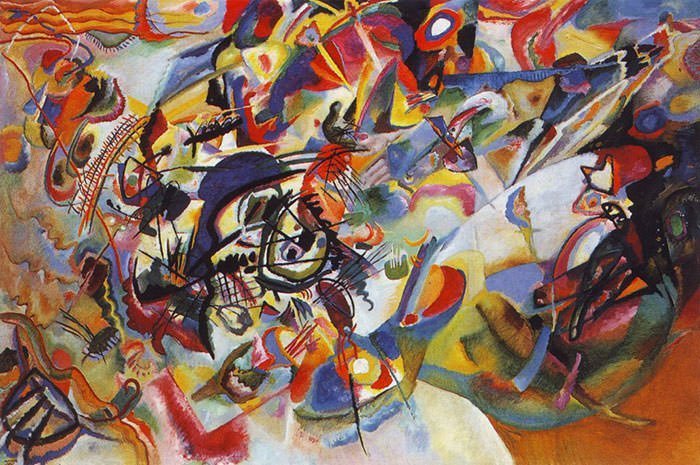
Other Famous Abstruse Works:-
On White II (1923)
Farbstudie Quadrate (1913)
Source: https://learnodo-newtonic.com/famous-abstract-artists